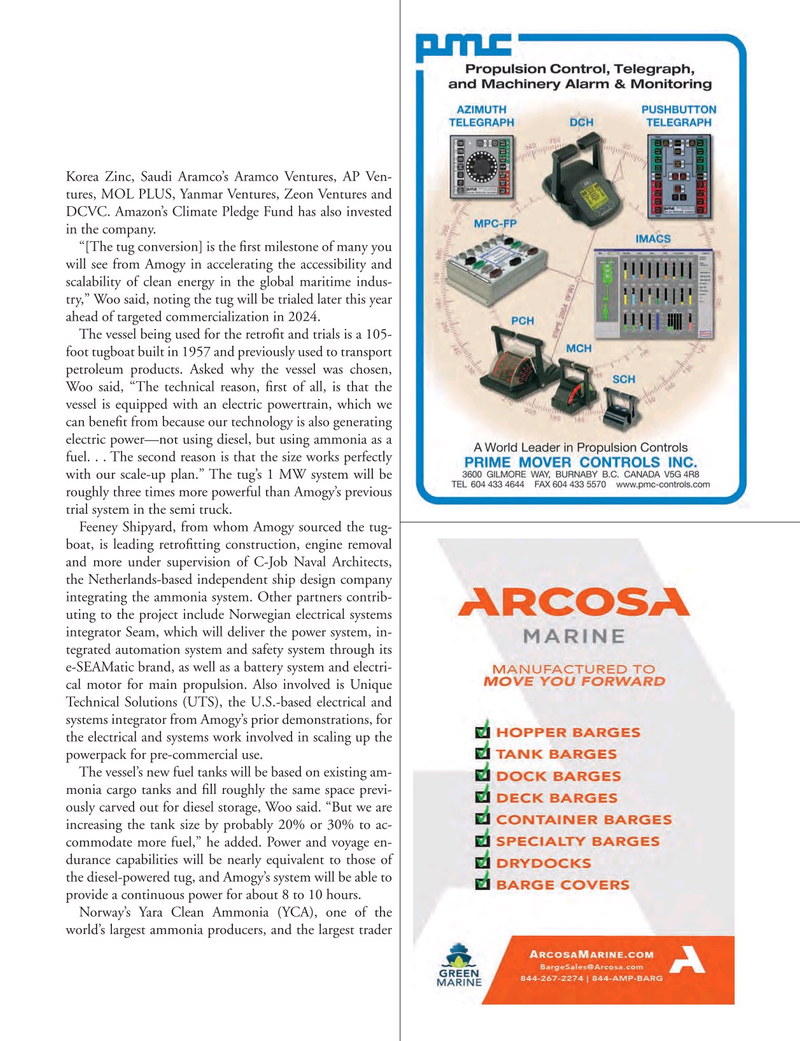
Page 27: of Marine News Magazine (April 2023)
Towboats, Tugs & Barges
Read this page in Pdf, Flash or Html5 edition of April 2023 Marine News Magazine
Korea Zinc, Saudi Aramco’s Aramco Ventures, AP Ven- tures, MOL PLUS, Yanmar Ventures, Zeon Ventures and
DCVC. Amazon’s Climate Pledge Fund has also invested in the company.
“[The tug conversion] is the ? rst milestone of many you will see from Amogy in accelerating the accessibility and scalability of clean energy in the global maritime indus- try,” Woo said, noting the tug will be trialed later this year ahead of targeted commercialization in 2024.
The vessel being used for the retro? t and trials is a 105- foot tugboat built in 1957 and previously used to transport petroleum products. Asked why the vessel was chosen,
Woo said, “The technical reason, ? rst of all, is that the vessel is equipped with an electric powertrain, which we can bene? t from because our technology is also generating electric power—not using diesel, but using ammonia as a fuel. . . The second reason is that the size works perfectly with our scale-up plan.” The tug’s 1 MW system will be roughly three times more powerful than Amogy’s previous trial system in the semi truck.
Feeney Shipyard, from whom Amogy sourced the tug- boat, is leading retro? tting construction, engine removal and more under supervision of C-Job Naval Architects, the Netherlands-based independent ship design company integrating the ammonia system. Other partners contrib- uting to the project include Norwegian electrical systems integrator Seam, which will deliver the power system, in- tegrated automation system and safety system through its e-SEAMatic brand, as well as a battery system and electri- cal motor for main propulsion. Also involved is Unique
Technical Solutions (UTS), the U.S.-based electrical and systems integrator from Amogy’s prior demonstrations, for the electrical and systems work involved in scaling up the powerpack for pre-commercial use.
The vessel’s new fuel tanks will be based on existing am- monia cargo tanks and ? ll roughly the same space previ- ously carved out for diesel storage, Woo said. “But we are increasing the tank size by probably 20% or 30% to ac- commodate more fuel,” he added. Power and voyage en- durance capabilities will be nearly equivalent to those of the diesel-powered tug, and Amogy’s system will be able to provide a continuous power for about 8 to 10 hours.
Norway’s Yara Clean Ammonia (YCA), one of the world’s largest ammonia producers, and the largest trader

 26
26

 28
28
